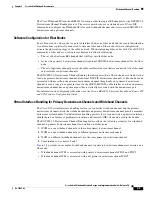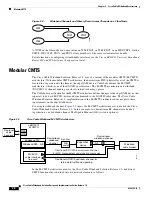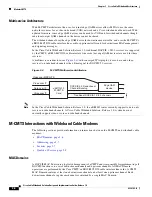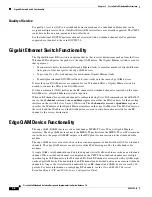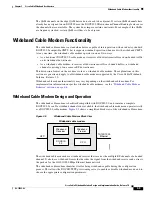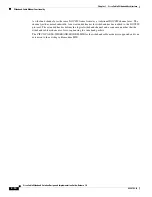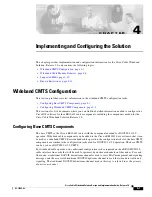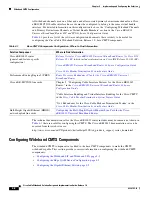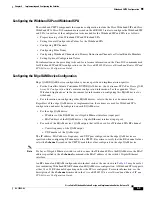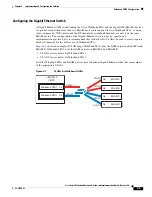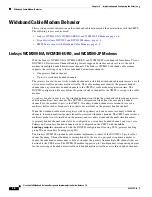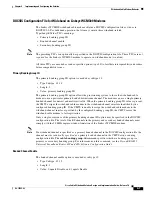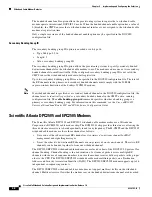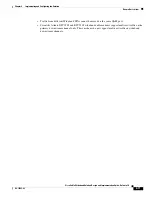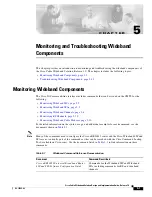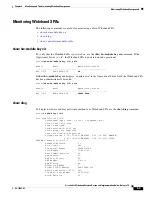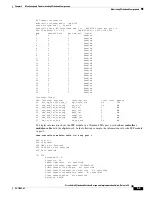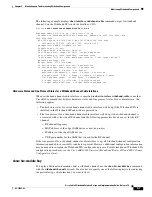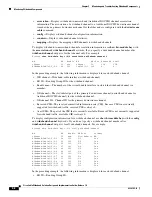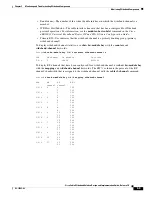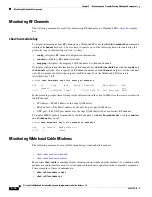
4-7
Cisco Cable Wideband Solution Design and Implementation Guide, Release 1.0
OL-10705-02
Chapter 4 Implementing and Configuring the Solution
Wideband Cable Modem Behavior
DOCSIS Configuration File for Wideband on Linksys WCM300 Modems
The Linksys WCM300 wideband cable modem obtains a DOCSIS configuration file as it does in
DOCSIS 2.0. For wideband operation, the file may contain three wideband-related
Type/Length/Value (TLV) encodings.
•
Primary bonding group ID
•
Bonded channel enable
•
Secondary bonding group ID
Note
The preceding TLVs can optionally be specified in the DOCSIS configuration file. These TLVs are
not
required
for the Linksys WCM300 modem to operate in wideband mode (w-online).
All three TLVs are encoded as vendor-specific options (type 43) to facilitate interoperability and reduce
future compatibility issues.
Primary Bonding Group ID
The primary bonding group ID option is encoded as subtype 14:
•
Type.Subtype: 43.14
•
Length: 2
•
Value: primary bonding group ID
The primary bonding group ID option allows the provisioning system to force the wideband cable
modem to use a particular primary bonded downstream channel. The modem can use a single primary
bonded channel for unicast and multicast traffic. When the primary bonding group ID value is present,
the CMTS assigns the wideband cable modem to the wideband-channel interface identified by the
configured bonding group ID. If the CMTS is unable to assign the wideband cable modem to the
wideband-channel interface specified by the configured bonding group ID, the CMTS causes the
wideband cable modem to fail registration.
Only a single occurrence of the primary bonding channel ID option may be specified in the DOCSIS
configuration file. The total of the RF channels in the primary and secondary bonded channels must
comply with the 50 MHz capture-window limitation of the Linksys WCM300 modem.
Note
If a wideband channel is specified as a primary bonded channel in the DOCSIS configuration file, the
channel
must be identically specified
as a primary bonded channel in the CMTS active, running
configuration file. The
cable bonding-group-id
command specifies whether a bonding group is a
primary or secondary bonding group. For information on this command, see the
Cisco uBR10012
Universal Broadband Router SIP and SPA Software Configuration Guide
.
Bonded Channel Enable
The bonded channel enable option is encoded as subtype 15:
•
Type.Subtype: 43.15
•
Length: 1
•
Value: 0 equals Disable, and 1 equals Enable

